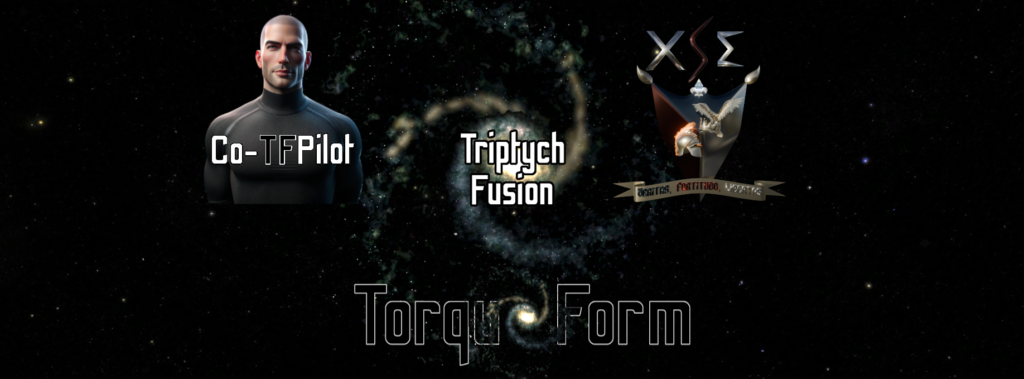We live in and among them, but do we even know what
"Wicked Problems" really are?

Wicked problems are complex, multifaceted issues that are difficult to define, understand, and solve due to their inherent complexity, ambiguity, and interconnectedness. Coined by social scientists Horst Rittel and Melvin Webber in the 1970s, wicked problems are distinct from “tame” or “well-defined” problems in that they lack clear problem definitions, have no definitive solutions, and involve multiple stakeholders with conflicting interests.
Characteristics of wicked problems include:
Complexity: Wicked problems involve numerous interrelated factors and variables that are often difficult to disentangle. They can span multiple domains and disciplines, making them inherently complex to analyze and address.
Uncertainty: Wicked problems are characterized by uncertainty and unpredictability. There may be incomplete or contradictory information, and the outcomes of interventions are often uncertain or difficult to anticipate.
Ambiguity: Wicked problems lack clear problem definitions and boundaries. Different stakeholders may have varying perspectives on the problem, its causes, and potential solutions, leading to ambiguity and confusion.
Interconnectedness: Wicked problems are interconnected with other issues and systems, both locally and globally. Interventions in one area may have unintended consequences in other areas, further complicating efforts to address the problem.
Persistent and Resistant to Resolution: Wicked problems tend to persist over time, defying attempts at straightforward solutions. Even if temporary solutions are implemented, the underlying issues often resurface or evolve into new challenges.
Examples of wicked problems include climate change, poverty, inadequate healthcare access, social inequality, urbanization and global conflict. These issues are deeply entrenched, involve multiple stakeholders with conflicting interests, and defy simple or linear solutions. Addressing wicked problems requires interdisciplinary approaches, collaborative decision-making processes, and adaptive strategies that recognize the complexity and uncertainty inherent in these challenges.
War, Poverty, Climate Change, Social Inequality...

Jon Kolko, Founder and Director of Austin Center for Design, a progressive educational institution teaching interaction design and social entrepreneurship, states in his book, Wicked Problems: Problems Worth Solving, as quoted by the Stanford Social Innovation Review in 2012,
A wicked problem is a social or cultural problem that is difficult or impossible to solve for as many as four reasons: incomplete or contradictory knowledge, the number of people and opinions involved, the large economic burden, and the interconnected nature of these problems with other problems. Poverty is linked with education, nutrition with poverty, the economy with nutrition, and so on. These problems are typically offloaded to policy makers, or are written off as being too cumbersome to handle en masse. Yet these are the problems—poverty, sustainability, equality, and health and wellness—that plague our cities and our world and that touch each and every one of us. These problems can be mitigated through the process of design, which is an intellectual approach that emphasizes empathy, abductive reasoning, and rapid prototyping.
Problems must first be addressed... then solved.

The importance of honestly facing problems and approaching them collaboratively and constructively involves highlighting several key points:
-
Acknowledging Reality: By honestly facing problems, individuals acknowledge the reality of the situation they are dealing with. Ignoring or denying problems only allows them to fester and potentially worsen over time. Honest assessment allows for a clear understanding of the challenges at hand, enabling more effective problem-solving.
-
Identifying Root Causes: Facing problems honestly allows individuals to delve deeper into the underlying causes and factors contributing to the issue. This understanding is essential for developing effective solutions that address the root of the problem rather than merely treating symptoms.
-
Promoting Transparency: Honest communication fosters transparency and trust among individuals or teams involved in problem-solving. When people feel comfortable sharing their perspectives, concerns, and ideas openly, it creates a conducive environment for collaboration and constructive dialogue.
-
Encouraging Innovation: Approaching problems with honesty and openness encourages creative thinking and innovation. When individuals feel empowered to explore various perspectives and propose unconventional solutions without fear of judgment, it opens up new possibilities and avenues for problem-solving.
-
Building Resilience: Facing problems head-on and working collaboratively to address them builds resilience and adaptability. It cultivates a growth mindset, where challenges are seen as opportunities for learning and improvement rather than insurmountable obstacles.
-
Fostering Ownership and Accountability: When individuals collectively confront problems and work together to find solutions, it promotes a sense of ownership and accountability. Each person feels invested in the outcome and is more likely to take responsibility for implementing and sustaining the solutions.
-
Driving Continuous Improvement: Honest problem-solving fosters a culture of continuous improvement, where individuals and organizations are constantly striving to identify and address areas for enhancement. It promotes a cycle of reflection, learning, and action that leads to ongoing growth and development.
In summary, honestly facing problems and approaching them collaboratively and constructively is essential for understanding, addressing, and ultimately overcoming challenges. It promotes transparency, innovation, resilience, ownership, and continuous improvement, ultimately leading to more effective problem-solving and positive outcomes.
Examples of Wicked Problems

In addition to climate change, poverty, lack of healthcare access, social inequality and global conflicts, other examples of wicked problems include:
Environmental Degradation: Addressing environmental issues like deforestation, pollution, loss of biodiversity, and climate change requires coordinated efforts across multiple sectors, including government, industry, and civil society, to mitigate the impacts of human activities on the environment.
Urbanization and Infrastructure: Managing rapid urbanization and developing sustainable infrastructure in growing cities present challenges related to land use, transportation, housing affordability, public services, and social equity.
Economic Inequality: Tackling economic inequality involves addressing disparities in income, wealth, and opportunities among different segments of the population. This includes addressing factors such as access to education, healthcare, employment, and social services.
Political Polarization: Addressing political polarization and social divisions within societies requires fostering dialogue, promoting understanding, and building consensus among diverse stakeholders with conflicting viewpoints and interests.
Lack of Food Security: Ensuring food security for growing populations involves addressing challenges related to agricultural productivity, distribution systems, access to nutritious food, and environmental sustainability.
Global Governance: Addressing global challenges, such as nuclear proliferation, terrorism, cyber threats, and migration, requires international cooperation, diplomacy, and multilateral agreements to develop effective strategies and responses.
Technological Disruption: Managing the hurdles of emerging technologies, such as artificial intelligence, automation, and biotechnology, on society requires addressing ethical, legal, and societal implications while harnessing the potential benefits for economic growth and human development.
These examples illustrate the diverse and interconnected nature of wicked problems, which require holistic, collaborative, and adaptive approaches to address effectively.
Food Production and Pharmaceuticals

Modern health issues related to poor nutrition from processed food are significant wicked problems. Here’s why:
Obesity Epidemic: Obesity has become a global health crisis, affecting millions of people worldwide. Poor dietary habits, including the consumption of processed foods high in sugar, fat, and calories, contribute to weight gain and obesity. Obesity is associated with a range of health problems, including heart disease, diabetes, stroke, and certain types of cancer.
Nutrient Deficiency: Processed foods often lack essential nutrients such as vitamins, minerals, fiber, and antioxidants found in whole, unprocessed foods like fruits, vegetables, whole grains, and lean proteins. A diet high in processed foods and low in nutritious whole foods can lead to nutrient deficiencies and compromised health.
Chronic Diseases: Poor nutrition from processed foods is linked to the development of chronic diseases such as type 2 diabetes, hypertension, and cardiovascular disease. Excessive consumption of processed foods high in refined carbohydrates, unhealthy fats, and additives contributes to the development and progression of these diseases.
Childhood Obesity: The prevalence of childhood obesity is on the rise globally, fueled in part by the availability and marketing of processed foods high in sugar, salt, and unhealthy fats. Childhood obesity increases the risk of developing obesity-related health problems later in life and can have long-term consequences for physical and emotional well-being.
Food Insecurity and Food Deserts: Access to affordable, nutritious food is a challenge for many communities, particularly in low-income and marginalized areas with limited access to grocery stores and fresh produce. These “food deserts” often have a higher prevalence of obesity and diet-related health problems due to reliance on processed and convenience foods.
Addressing the complex issue of poor nutrition from processed food requires a multifaceted approach, including:
- Promoting nutrition education and healthy eating habits
- Encouraging consumption of whole, unprocessed foods
- Implementing policies to regulate the marketing and labeling of processed foods
- Increasing access to affordable, nutritious foods in underserved communities
- Supporting initiatives to improve food literacy and cooking skills
- Collaborating with food manufacturers and retailers to reformulate products and reduce unhealthy ingredients
- Empowering individuals and communities to make informed food choices and adopt healthier lifestyles.
By addressing these interconnected factors, policymakers, healthcare professionals, educators, and communities can work together to mitigate the impact of poor nutrition from processed foods and promote better health outcomes for all.
There are several wicked problems entwined in the pharmaceutical industry. These problems are complex, multifaceted, and often resistant to traditional problem-solving approaches. Some examples include:
Drug Pricing and Access: Ensuring affordable access to essential medications for all individuals, particularly in underserved or low-income communities, is a significant challenge. The high cost of prescription drugs, complex pricing structures, and lack of transparency in pharmaceutical pricing contribute to disparities in access to healthcare and medication affordability.
Drug Development and Innovation: Developing new pharmaceutical drugs involves navigating complex regulatory processes, investing significant resources in research and development, and addressing scientific and ethical considerations. Balancing the need for innovation with concerns about safety, efficacy, and patient access poses challenges for pharmaceutical companies, regulators, and healthcare stakeholders.
Drug Safety and Regulation: Ensuring the safety and effectiveness of pharmaceutical drugs while balancing the need for timely access to new treatments is a complex challenge. Regulatory agencies face the difficult task of evaluating the risks and benefits of drugs, monitoring adverse events, and enforcing compliance with safety standards to protect public health.
Intellectual Property Rights and Patent Issues: Intellectual property rights, including patents and exclusivity rights, play a crucial role in incentivizing innovation and investment in the pharmaceutical industry. However, concerns about patent abuse, evergreening, and access to generic drugs pose challenges for promoting competition, affordability, and equitable access to medications.
Healthcare Inequities and Global Access: Disparities in healthcare access and pharmaceutical innovation exist both within and across countries. Addressing global health challenges, such as infectious diseases, neglected tropical diseases, and access to essential medicines, requires collaborative efforts among governments, international organizations, and pharmaceutical companies to ensure equitable access to healthcare and medication worldwide.
Drug Addiction and Overuse: The opioid epidemic and rising rates of prescription drug abuse highlight the complex challenges associated with managing pain, addiction, and overuse of pharmaceutical drugs. Balancing the need for effective pain management with concerns about addiction, misuse, and diversion of prescription medications requires comprehensive strategies that address both medical and societal factors.
Ethical Considerations: Ethical dilemmas in the pharmaceutical industry, such as conflicts of interest, data transparency, and patient autonomy, pose challenges for ensuring ethical conduct and decision-making in drug development, marketing, and access. Balancing commercial interests with ethical principles and patient welfare requires ongoing scrutiny and accountability.
These examples illustrate the diverse and interconnected nature of wicked problems in the pharmaceutical industry, which require collaborative, interdisciplinary, and innovative approaches to address effectively. By recognizing and addressing these challenges, stakeholders can work towards improving healthcare outcomes, promoting equitable access to medications, and advancing public health globally.
The interconnected ownership and profit motives of companies involved in both the production of unhealthy food and the pharmaceutical drugs used to treat related health conditions contribute to a wicked problem. This situation presents several complex and intertwined challenges:
Conflicting Interests: Companies that manufacture and market unhealthy food products may have a vested interest in promoting consumption and sales of these products to maximize profits. At the same time, pharmaceutical companies may benefit financially from selling medications to treat the health conditions resulting from poor dietary habits, creating a conflict of interest between promoting health and generating revenue.
Health Impacts: The consumption of unhealthy food products, such as processed foods high in sugar, fat, and additives, contributes to the development of chronic health conditions, including obesity, diabetes, cardiovascular disease, and certain cancers. These health conditions often require long-term medical treatment and pharmaceutical interventions, leading to increased healthcare costs and burdens on healthcare systems.
Ethical Considerations: The interconnected ownership and profit motives of companies involved in both the production of unhealthy food and pharmaceutical drugs raise ethical concerns about prioritizing corporate profits over public health. This situation may exacerbate health disparities, exploit vulnerable populations, and undermine efforts to promote healthy lifestyles and prevent chronic diseases.
Policy and Regulation: Addressing the complex interplay between unhealthy food consumption, chronic disease burden, and pharmaceutical treatment requires comprehensive policy and regulatory measures. However, regulatory frameworks may face challenges, such as industry lobbying, regulatory capture, and conflicts of interest, which can hinder efforts to enact effective public health policies and interventions.
Systemic Solutions: Addressing the root causes of the interconnected ownership and profit motives underlying this wicked problem requires systemic solutions that promote transparency, accountability, and ethical business practices. This may involve regulatory reforms, corporate accountability measures, consumer education and empowerment initiatives, and partnerships between government, industry, and civil society to promote healthier food environments and prevent chronic diseases.
Overall, the interconnected ownership and profit motives of companies involved in the production of unhealthy food and pharmaceutical drugs contribute to a wicked problem characterized by complex interdependencies, conflicting interests, and ethical dilemmas. Addressing this issue requires a multi-sectoral and collaborative approach that prioritizes public health, transparency, and accountability in both the food and pharmaceutical industries.
Information and evidence supporting statements about corporate ownership and control in the food and pharmaceutical industries can be found by consulting the following sources:
Corporate Ownership and Control: You can explore financial databases such as Bloomberg, Reuters, or S&P Global Market Intelligence for information on corporate ownership structures within the food and pharmaceutical industries. These databases often provide detailed information about parent companies, subsidiaries, and ownership stakes.
Corporate Annual Reports: Companies typically disclose their subsidiaries and business segments in their annual reports. These reports are publicly available and can be found on the websites of the respective companies or through databases like the U.S. Securities and Exchange Commission’s EDGAR system.
Industry Analysis Reports: Reports and analyses from reputable sources such as McKinsey & Company, Deloitte, PricewaterhouseCoopers (PwC), or industry-specific research firms often discuss trends in corporate ownership and consolidation within the food and pharmaceutical sectors.
Academic Research: Scholarly articles and studies in academic journals focusing on business, economics, and industry studies may provide insights into corporate ownership structures and trends in the food and pharmaceutical industries.
News Articles and Business Publications: Articles from reputable news outlets such as The Wall Street Journal, Financial Times, Bloomberg, Forbes, and industry-specific publications often cover topics related to corporate ownership, mergers, acquisitions, and conglomerates in the food and pharmaceutical sectors.

Wicked Problems are acknowledged by professionals involved in planning and policy as being different from conventional problems (which typically have logical and clear-cut, viable solutions) firstly, by having an ambiguous definition and lack of boundary of where the problem starts and stops, and secondly, by having no seemingly feasible solution. John C. Camillus of Harvard Business Review magazine stated in 2008,
Wickedness isn’t a degree of difficulty. Wicked issues are different because traditional processes can’t resolve them, according to Horst W.J. Rittel and Melvin M. Webber, professors of design and urban planning at the University of California at Berkeley, who described them in a 1973 article in Policy Sciences magazine. A wicked problem has innumerable causes, is tough to describe, and doesn’t have a right answer, as we will see in the next section. Environmental degradation, terrorism, and poverty—these are classic examples of wicked problems. They’re the opposite of hard but ordinary problems, which people can solve in a finite time period by applying standard techniques. Not only do conventional processes fail to tackle wicked problems, but they may exacerbate situations by generating undesirable consequences.
How Wicked Problems Affect You and the Whole World

Wicked problems have several negative effects on society and the world:
Social Inequality: Wicked problems often exacerbate social inequalities by disproportionately affecting marginalized communities. For example, issues such as poverty, access to healthcare, education disparities, and environmental degradation tend to impact vulnerable populations more severely, widening existing social divides.
Environmental Degradation: Many wicked problems, such as climate change, pollution, deforestation, and loss of biodiversity, contribute to environmental degradation. This not only harms ecosystems and wildlife but also threatens human health, livelihoods, and food security.
Economic Instability: Wicked problems can lead to economic instability by disrupting markets, increasing costs, and reducing productivity. For instance, natural disasters, conflicts, and global crises like pandemics can have profound economic consequences, particularly in vulnerable regions with limited resources or infrastructure.
Political Instability: Wicked problems often strain political systems and governance structures, leading to instability, social unrest, and conflicts. Issues such as corruption, inequality, human rights abuses, and lack of access to justice can undermine trust in institutions and exacerbate tensions within and between societies.
Health Impacts: Many wicked problems have significant health implications, including physical and mental health effects. For example, infectious diseases, pollution-related illnesses, inadequate healthcare access, and food insecurity contribute to poor health outcomes and reduced quality of life for individuals and communities.
Humanitarian Crises: Wicked problems such as armed conflicts, displacement, natural disasters, and refugee crises create humanitarian emergencies that strain resources, disrupt lives, and exacerbate suffering. These crises often require coordinated international responses to address the immediate needs of affected populations and mitigate long-term consequences.
Global Interconnectedness: Wicked problems are often interconnected and transcend national borders, making them challenging to address through isolated efforts. Issues like climate change, economic globalization, migration, and infectious diseases require coordinated international cooperation and collective action to achieve meaningful solutions.
Overall, the negative effects of wicked problems are far-reaching and multifaceted, impacting societies, economies, environments, and individuals worldwide. Addressing these complex challenges requires holistic approaches that consider interconnected systems, involve diverse stakeholders, and prioritize equity, sustainability, and resilience.
AI tells of those "who have exploited or exacerbated wicked problems for personal gain or power."

History provides examples of individuals or groups who have exploited or exacerbated wicked problems for personal gain or power. Here are a few scenarios where this might occur:
Economic Exploitation: Throughout history, some wealthy individuals or corporations have exploited economic inequality, labor exploitation, and resource depletion for financial gain. By perpetuating or exacerbating these problems, they may increase their wealth and influence at the expense of others.
Environmental Destruction: Industries or individuals with vested interests in resource extraction have been known to disregard environmental concerns and contribute to pollution and habitat destruction. This can lead to long-term environmental degradation while benefiting those who profit from resource exploitation.
Political Manipulation: In some cases, wealthy individuals or special interest groups may manipulate political systems to further their own agendas, even if it means exacerbating social divisions, undermining democratic processes, or perpetuating injustice. This can contribute to political instability and social unrest.
Healthcare Exploitation: Certain individuals or companies within the healthcare industry may prioritize profit over public health by promoting addictive substances, such as tobacco or opioids, or by inflating prices for life-saving medications. This can worsen public health crises while benefiting those who profit from the sale of these products.
War and Conflict: Some individuals or entities have been known to fuel or perpetuate conflicts for personal gain, whether through arms sales, resource acquisition, territorial expansion, or political power. This can lead to widespread suffering, displacement, and human rights abuses.
While these scenarios represent extreme examples, they illustrate how individuals with wealth and power may exploit or worsen wicked problems for their own benefit. It’s important to recognize and address such injustices through ethical governance, regulation, accountability, and advocacy for systemic change. Additionally, fostering transparency, promoting equitable distribution of resources, and empowering marginalized communities can help mitigate the impact of ill-willed actions on society.
Here are some specific examples of how some individuals or groups have exploited or worsened wicked problems for personal gain throughout history:
1. Colonialism and Resource Extraction- During the era of European colonialism, wealthy colonial powers exploited resources from colonized territories for their own benefit. This often involved forced labor, environmental degradation, and economic exploitation of indigenous populations. For example, the extraction of natural resources such as gold, diamonds, and rubber from colonized regions in Africa and South America led to widespread environmental destruction, displacement of indigenous peoples, and economic inequality.
2. Corporate Pollution- In the industrial era, many corporations have prioritized profit over environmental concerns, leading to pollution and ecological damage. For instance, in the mid-20th century, companies like the American Smelting and Refining Company (ASARCO) released toxic pollutants into the air and water, leading to widespread environmental contamination and health problems in communities near their facilities. Despite knowing the risks, these companies continued their operations to maximize profits.
3. Big Tobacco- The tobacco industry has a long history of downplaying the health risks of smoking and actively promoting addictive products to increase profits. For decades, tobacco companies funded misleading research, lobbied against regulations, and targeted vulnerable populations, such as children and low-income communities, to maintain their market share. This has contributed to millions of premature deaths and widespread health problems related to smoking.
4. Pharmaceutical Price Gouging- In recent years, some pharmaceutical companies have been criticized for inflating the prices of life-saving medications, making them unaffordable for many patients. For example, the pharmaceutical company Mylan faced backlash for significantly raising the price of the EpiPen, a device used to treat severe allergic reactions. This price increase put the medication out of reach for many patients who relied on it, while benefiting the company’s profits.
5. Conflict Minerals- In regions of conflict, such as the Democratic Republic of Congo (DRC), armed groups and corrupt officials have exploited mineral resources, such as coltan, tin, tungsten, and gold, to finance armed conflict and enrich themselves. These conflict minerals are used in many consumer electronics products, including smartphones and laptops. The demand for these minerals fuels violence, human rights abuses, and instability in the region, while benefiting those who profit from their extraction and sale.
6. Financial Crisis and Mortgage Fraud- Prior to the 2008 financial crisis, some financial institutions engaged in risky lending practices and mortgage fraud to maximize profits. They offered subprime mortgages to borrowers who were unlikely to repay them, bundled these risky loans into complex financial products, and sold them to investors. This contributed to the housing bubble, which eventually led to the collapse of the housing market, widespread foreclosures, and the global financial crisis.
7. Water Privatization- In some cases, private companies have sought to privatize water resources, such as lakes, rivers, and aquifers, for profit. By gaining control over water sources, these companies can dictate pricing and access, often leading to water scarcity and inequitable distribution. For example, the privatization of water resources in Bolivia led to widespread protests and social unrest, as residents were unable to afford clean drinking water.
8. Corporate Lobbying and Influence- Wealthy individuals and corporations often engage in lobbying and political influence in an attempt to shape policies in their favor. If successful, this could lead to regulatory capture, where government agencies tasked with regulating industries end up serving the interests of the corporations they are supposed to oversee.
9. Military-Industrial Complex- The military-industrial complex refers to the close relationship between the military establishment and defense contractors, who must rely almost exclusively on government contracts to maintain their business. This can lead to defense contractors lobbying for increased military spending to maintain their revenue, but can also result in overproduction and the exporting of armed conflicts.
10. Exploitation of Indigenous Lands- Throughout history, wealthy individuals and corporations have exploited indigenous lands for natural resources, such as oil, gas, and minerals, often without consent or fair compensation to indigenous communities. This exploitation has led to environmental degradation, loss of cultural heritage, and displacement of indigenous peoples from their ancestral lands.
These examples illustrate how individuals or entities with wealth and power have exploited or exacerbated wicked problems for their own gain, often at the expense of marginalized communities, environmental sustainability, and public health. Addressing these issues requires collective action, ethical leadership, and systemic change to promote equity, accountability, and sustainability.
Creating a System to Rise Above Wicked Problems...

Wicked problems are characterized by their complexity, interconnectedness, and resistance to straightforward solutions. They often involve multiple stakeholders with conflicting interests, incomplete or contradictory information, and uncertain outcomes. Examples of wicked problems include climate change, poverty, healthcare access, and global inequality.
Addressing wicked problems requires a multifaceted approach that considers diverse perspectives, anticipates unintended consequences, and adapts to changing circumstances. Traditional linear problem-solving methods are often inadequate for tackling wicked problems due to their systemic nature and inherent uncertainty.
This is where carefully engineered complex systems, augmented by technology and artificial intelligence (AI), can play a crucial role. Here’s how:
Systems Thinking: Complex systems thinking recognizes that wicked problems are interconnected and dynamic, with multiple feedback loops and nonlinear relationships. By employing systems thinking approaches, engineers can better understand the underlying causes and interdependencies of wicked problems, enabling them to develop holistic solutions that consider the broader systemic context.
Data-driven Insights: Technology and AI can provide valuable insights by analyzing large volumes of data and identifying patterns, trends, and correlations within complex systems. By harnessing the power of data analytics, engineers can gain a deeper understanding of wicked problems, uncover hidden relationships, and inform evidence-based decision-making.
Adaptive Strategies: Wicked problems are characterized by uncertainty and unpredictability, requiring adaptive strategies that can respond to changing conditions and evolving dynamics. Technology and AI can facilitate dynamic feedback loops and continuous learning, in order to adapt strategies in response to new information and emerging challenges.
Collaborative Platforms: Addressing wicked problems often requires collaboration among diverse stakeholders, including government agencies, NGOs, businesses, and local communities. Technology can facilitate collaboration by providing platforms for communication, coordination, and knowledge sharing, enabling stakeholders to work together towards common goals and leverage collective expertise and resources.
By leveraging carefully engineered complex systems augmented by technology and AI, engineers can develop innovative solutions to address wicked problems more effectively. These solutions are characterized by their systemic approach, data-driven insights, adaptive strategies, and collaborative processes, enabling people to tackle some of the world’s most pressing challenges in a comprehensive and impactful manner.
...Is an endeavor that "requires great courage" -AI

Creating a complex system to combat wicked problems requires great courage due to several factors:
Challenge to the Status Quo: Wicked problems are deeply entrenched in societal, economic, and political structures around the world. Introducing a complex system to address these problems challenges the status quo and may face resistance from powerful stakeholders who benefit from the existing system. It takes courage to confront these interests and push for change despite potential backlash.
Uncertainty and Risk: Designing a complex system involves navigating uncertainty and inherent risks. There’s no guarantee of success, and there is always possibility of failure. Courage is needed to embrace uncertainty, take calculated risks, and persevere in the face of setbacks.
Resistance and Opposition: As mentioned earlier, combating wicked problems often elicits resistance and opposition from various quarters. This can manifest in forms such as pressure, social backlash, or even personal attacks. It takes courage to withstand these challenges and remain steadfast in pursuit of the greater good.
Ethical Considerations: Addressing wicked problems requires making difficult ethical decisions, balancing competing interests, and navigating complex moral dilemmas. It takes courage to uphold ethical principles, especially when doing so may come at personal or professional cost.
Long-term Commitment: Combatting wicked problems is not a one-time endeavor but a long-term commitment requiring sustained effort, resources, and dedication. It takes courage to stay committed to a cause despite the inevitable challenges, setbacks, and frustrations along the way.
Social and Cultural Norms: Wicked problems are often deeply embedded in social and cultural norms, attitudes, and behaviors. Challenging these norms requires courage, as it may involve confronting deeply ingrained beliefs, prejudices, or taboos.
Personal Sacrifice: Creating a complex system to combat wicked problems may require personal sacrifice, including time, energy, resources, and even facing personal risks or threats. It takes courage to make these sacrifices and put the greater good above one’s own comfort or self-interest.
In conclusion, creating a complex system specifically designed to combat wicked problems demands great courage due to the inherent challenges, risks, and opposition involved. It requires individuals or groups willing to confront the status quo, embrace uncertainty, uphold ethical principles, and persevere in the face of adversity to effect meaningful change for the betterment of society.
When discussing resistance and backlash in the context of combating wicked problems, it’s important to understand that these problems often have established stakeholders who benefit from the status quo. These stakeholders may include individuals, organizations, or even entire industries whose interests are closely tied to the continuation of the existing system.
Here’s a more detailed explanation of this point:
Entrenched Interests: Wicked problems typically sustain themselves because they benefit certain individuals or groups. These stakeholders may have significant power, resources, and influence, which they use to maintain the status quo.
Fear of Change: Introducing a complex system designed to combat a wicked problem often represents a significant change from the existing state of affairs. This can provoke fear, uncertainty, and resistance among those who feel threatened by the proposed changes. People are generally more comfortable with the familiar, even if it’s flawed, than with the uncertainty of change.
Loss of Privilege or Advantage: The beneficiaries of wicked problems may perceive efforts to combat these problems as a threat to their privileges or advantages.
Opposition: Wicked problems can be deeply intertwined with many individuals and interest groups and ideologies. Attempts to combat these problems may face opposition from those who are aligned with the status quo or who derive support from the beneficiaries of the existing problem.
Economic Disruption: Complex systems designed to combat wicked problems often involve significant economic changes. This disruption can lead to resistance from those whose livelihoods are threatened by such changes.
Psychological Factors: Resistance to change is also influenced by psychological factors such as inertia, cognitive biases, and fear of the unknown. People may resist change simply because it challenges their existing beliefs, habits, or identities.
In summary, resistance and backlash are common when attempting to combat wicked problems because they threaten the interests, privileges, and beliefs of entrenched stakeholders. Addressing these challenges requires careful navigation of economic, social, and psychological dynamics to build consensus, mitigate opposition, and foster meaningful change.

XSE is the first application of systems engineering that focuses on the integrity and strength of the human from the individual to the global level with a goal to rise above wicked problems. XSE provides strategy to approach any system with new vision, promoting critical and creative thinking from the XSE astronomical vantage point. By strengthening people and increasing integrity worldwide, XSE is specifically designed to abate wicked problems.
Promotion:
Promotion. XSE embraces diversity in collaboration with other organizations committed to advancing our mission, including Luxauro, LLC, with whom we share a common vision and ownership. All collaborations are guided by principles of transparency and integrity. See XSE’s Activities, Partnerships, and Collaborations. TorqueForm, Co-TFPilot, and Triptych Fusion are trademarks of Luxauro, LLC.
The first system designed and developed using XSE is the TorqueForm, a complex internet platform created to help triumph over wicked problems. The TorqueForm is strategically designed to benefit the mind, body, and spirit of individuals and society as a whole, as the incorporation of Independent Integration Systems Engineering methods functions to draw out from people qualities such as integrity, true inner freedom, strength, compassion, and self-control. Human tendencies towards entertainment can be wisely put to use for the benefit of the human by intelligently incorporating them with purpose into everyday online commerce and business activities in the metaverse. As part of the Triptych Fusion, the TorqueForm’s metaverse, X-Skyway (in development), is being designed to be a virtual land of interactive and immersive experiences specifically designed to enhance and develop character strengths. The TorqueForm, depicted as a mission cyber ship of light, is the courageous endeavor to rise above the darkness of wicked problems, as the dawn of a new era breaks.
The TorqueForm is Depicted as a Mission Cyber Ship Designed to
Rise Above Wicked Problems

The following are just a few ways that this complex software-based system of the Triptych Fusion is strategically designed to address and combat wicked problems:
Holistic Approach: The proposed system addresses wicked problems by adopting a holistic approach that integrates multiple components, including e-commerce, crowdfunding, professional networking, social connections, help forums, artificial intelligence, immersive experiences, and systems engineering focused on human integrity. This comprehensive approach allows for tackling wicked problems from multiple angles, leveraging diverse strategies and resources.
Local Empowerment: By specializing in local merchants, fresh markets, and crowdfunding for new businesses, the system empowers local communities economically. This localized focus can help address issues such as economic disparity, unemployment, and sustainability by supporting small businesses and independent food production.
Social Support and Connectivity: The incorporation of a capitalized professional network, purposeful social connections, and help forums fosters a sense of community and support. This social infrastructure can help address social isolation, mental health issues, and lack of access to resources by providing a platform for collaboration, networking, and mutual assistance.
Education and Empowerment: The promotion of education and future inclusion of immersive metaverse experiences focused on edutainment and character strength building, personal development, and empowerment. By encouraging learning, the system can contribute to addressing issues such as educational inequality, skill gaps, and personal development needs.
Artificial Intelligence Integration: Leveraging artificial intelligence can enhance the system’s capabilities in data analysis, personalized recommendations, and process optimization. AI-driven insights and automation can help identify patterns, optimize operations, and provide tailored support, thereby improving efficiency and effectiveness in addressing wicked problems.
Systems Engineering for Human Integrity: The application of a new method of systems engineering focused on human integrity emphasizes the holistic well-being of individuals, including physical, mental, and spiritual health. By prioritizing human values and well-being in system design and operation, the system can contribute to addressing underlying systemic issues that contribute to wicked problems, such as inequality, exploitation, and disconnection.
Potential Solutions within the Triptych Fusion

Implementing a holistic approach such as combining easier access to healthier, locally produced food, positive social interactions, and opportunities for personal and professional education and advancement, as well as social connections for physical activity, can have significant benefits for individuals and communities in navigating the challenges of the modern world.
Here’s how each component of this approach can contribute to promoting health and well-being:
Education (Esp. Nutritional): Providing nutritional information helps individuals make informed food choices, understand the importance of balanced nutrition, and develop healthy eating habits. By increasing awareness of the relationship between diet and health, nutritional knowledge empowers individuals to make healthier food choices and adopt sustainable lifestyle behaviors.
Access to Healthier, Locally Produced Food: Improving access to healthier, locally produced food options promotes dietary diversity, supports local economies, and reduces reliance on processed and unhealthy food products. By increasing the availability of fresh fruits, vegetables, whole grains, and sustainably sourced foods, communities can create environments that facilitate healthier eating patterns and improve overall health outcomes.
Positive Social Interactions: Positive social interactions contribute to mental and emotional well-being by fostering a sense of belonging, support, and connection within communities. Building strong social networks and supportive relationships can help individuals cope with stress, reduce feelings of isolation, and promote resilience in the face of life’s challenges.
Personal and Professional Advancement: Offering opportunities for personal and professional development empowers individuals to pursue their goals, fulfill their potential, and lead fulfilling lives. Access to education, skills training, career advancement programs, and mentorship opportunities enables individuals to enhance their knowledge, skills, and capabilities, leading to improved socioeconomic outcomes and greater self-sufficiency.
Social Connections for Physical Activity: Engaging in physical activity with others promotes social interaction, teamwork, and camaraderie while also improving physical fitness and overall health. Participating in group-based activities, sports, recreational programs, and community events encourages regular exercise, reduces sedentary behavior, and enhances social well-being.
By integrating these components into comprehensive promotion initiatives, communities can create environments that support and empower individuals to make healthier lifestyle choices, build resilience, and thrive in the modern world. Emphasizing the importance of balance, moderation, and mindful consumption, while leveraging technology and innovation to facilitate positive behavior change, can help individuals achieve optimal health and well-being in an era of abundant options and technological advancements.

References
- Camillus, John C. 2008. Strategy as a Wicked Problem. Harvard Business Review. https://hbr.org/2008/05/strategy-as-a-wicked-problem.
- Kolko, Jon. 2012. Wicked Problems: Problems Worth Solving. Stanford Social Innovation Review. https://ssir.org/books/excerpts/entry/wicked_problems_problems_worth_solving.


